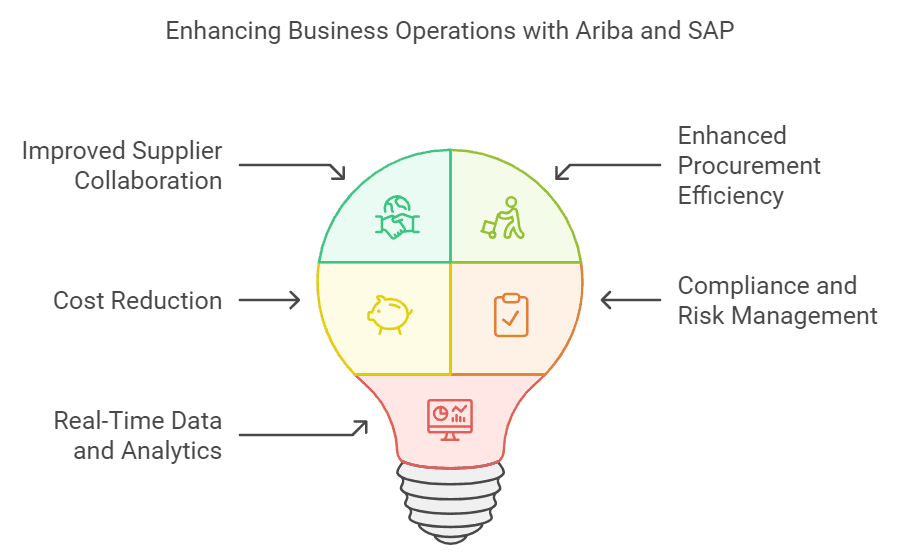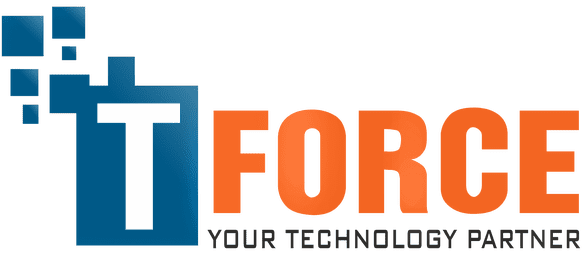Ariba and SAP: How SAP Ariba Transforms Procurement and Supplier Collaboration
In today’s competitive business environment, companies seek efficient solutions to streamline their procurement and supplier management processes. Ariba and SAP are at the forefront of this transformation. SAP Ariba is a cloud-based procurement solution that helps organizations manage their supply chains, procurement, and supplier collaboration more effectively. This blog explores how Ariba and SAP work together to revolutionize procurement processes and supplier collaboration.
What is SAP Ariba?
SAP Ariba is a cloud-based procurement platform that allows organizations to connect with suppliers globally. By integrating Ariba and SAP, businesses can optimize their procurement processes, reduce costs, improve transparency, and foster better collaboration with suppliers.
SAP Ariba provides features like spend management, contract management, supplier lifecycle managementو strategic sourcing, making it an all-in-one solution for modern procurement needs.
Key Features of Ariba and SAP
The integration of Ariba and SAP offers various features that simplify procurement and supplier collaboration:
- إدارة الموردين
- SAP Ariba helps businesses maintain a centralized database of suppliers. Organizations can evaluate, select, and manage suppliers more effectively using this feature.
- Spend Management
- This feature enables businesses to track and manage their spending patterns. With comprehensive analytics, SAP Ariba provides real-time insights into procurement costs, helping companies optimize spending.
- إدارة العقود
- SAP Ariba streamlines contract creation, storage, and compliance tracking. Businesses can create standardized contracts, reducing the time spent on contract negotiation and ensuring compliance with legal requirements.
- Strategic Sourcing
- SAP Ariba simplifies the sourcing process by enabling businesses to source goods and services from a global network of suppliers. This feature helps businesses find the best suppliers, negotiate prices, and manage sourcing projects.
- Procure-to-Pay (P2P)
- The P2P feature of SAP Ariba automates the entire procurement process, from requisitioning to payment. This results in reduced manual work, fewer errors, and faster procurement cycles.
- Supplier Collaboration
- SAP Ariba fosters better collaboration between buyers and suppliers. It provides real-time communication tools and enables suppliers to manage their catalogs, respond to RFQs, and receive purchase orders quickly.
Benefits of Integrating Ariba and SAP

1. تحسين التعاون بين الموردين
- مع Ariba and SAP, businesses can seamlessly collaborate with their suppliers. The platform offers real-time visibility into supplier performance and enables better communication, helping organizations build stronger relationships with their suppliers.
2. Enhanced Procurement Efficiency
- The integration of Ariba and SAP automates procurement tasks like sourcing, ordering, and invoicing, reducing manual errors and improving the overall efficiency of the procurement process.
3. تخفيض التكلفة
- SAP Ariba’s spend analysis tools provide insights into procurement costs, helping businesses identify cost-saving opportunities. By optimizing supplier selection and negotiating better contracts, companies can reduce procurement costs significantly.
4. الامتثال وإدارة المخاطر
- SAP Ariba ensures that businesses remain compliant with industry regulations. It offers tools for tracking contract compliance, monitoring supplier performance, and managing procurement risks.
5. Real-Time Data and Analytics
- With the integration of Ariba and SAP, businesses have access to real-time data and advanced analytics. This enables companies to make data-driven decisions, optimize procurement strategies, and gain insights into supplier performance.
How SAP Ariba Transforms Procurement Processes
The integration of Ariba and SAP revolutionizes procurement by offering automation, enhanced visibility, and a streamlined workflow. Let’s break down how SAP Ariba transforms the different stages of procurement:
1. Sourcing
- إن sourcing process becomes easier with SAP Ariba, as it enables businesses to access a global network of suppliers. This allows companies to find the best suppliers based on price, quality, and delivery times.
2. Purchase Orders
- SAP Ariba automates the purchase order process, reducing manual intervention. Businesses can send purchase orders directly to suppliers, and suppliers can confirm orders in real-time.
3. Invoicing and Payments
- The platform automates the invoicing process, allowing suppliers to submit electronic invoices, which are automatically matched to purchase orders. This reduces the risk of payment errors and speeds up the payment cycle.
4. Supplier Onboarding
- SAP Ariba simplifies the process of onboarding new suppliers by providing a centralized platform for managing supplier information, contracts, and performance data.
5. تحليل الإنفاق
- إن spend analysis feature provides businesses with detailed insights into their procurement expenditures, helping them identify areas for cost savings and process optimization.
Challenges in Implementing Ariba and SAP Integration
في حين أن Ariba and SAP offer significant benefits, businesses may encounter challenges when implementing the integration. These challenges include:
1. ترحيل البيانات
- Migrating data from legacy systems to SAP Ariba can be complex. Ensuring data accuracy and completeness is critical during this process.
2. تدريب المستخدمين
- SAP Ariba introduces new processes and interfaces that employees must learn. Training employees to use the platform effectively is crucial for successful adoption.
3. Customizations
- Businesses may need to customize their SAP Ariba platform to meet their specific needs. This requires careful planning and collaboration with SAP consultants to ensure the customizations align with the organization’s goals.
Steps to Implement Ariba and SAP
| الخطوة | الوصف |
|---|---|
| Step 1: Assessment | Evaluate current procurement processes and identify areas where SAP Ariba can add value. |
| Step 2: Planning | Develop a detailed implementation plan, including timelines, resources, and key milestones. |
| Step 3: Data Migration | Migrate data from legacy systems to SAP Ariba, ensuring data accuracy and completeness. |
| Step 4: Customization | Customize the SAP Ariba platform to align with business needs and workflows. |
| Step 5: User Training | Provide comprehensive training to employees on how to use SAP Ariba effectively. |
| Step 6: Go-Live | Launch the integrated Ariba and SAP solution and monitor performance. |
| Step 7: Continuous Improvement | Regularly review and optimize procurement processes to ensure maximum value from the SAP Ariba platform. |
Use Cases: How Ariba and SAP Are Used in Real Life
1. الصناعة التحويلية
- A global manufacturing company integrated Ariba and SAP to optimize their procurement process. By leveraging SAP Ariba’s strategic sourcing tools, the company was able to source raw materials more efficiently and reduce procurement costs by 15%.
2. صناعة التجزئة
- A leading retail organization implemented Ariba and SAP to streamline supplier collaboration. The platform’s automated invoicing and payment capabilities helped reduce manual errors and improved payment accuracy, enhancing supplier relationships.
3. Healthcare Industry
- A healthcare provider used Ariba and SAP to manage a large network of suppliers. The platform’s compliance tools ensured that all suppliers adhered to industry regulations, reducing procurement risks and improving supply chain transparency.
الخاتمة Ariba and SAP
The integration of Ariba and SAP offers businesses a powerful tool for transforming procurement and supplier collaboration. By automating processes, improving supplier management, and providing real-time insights, SAP Ariba enables organizations to optimize their procurement strategies, reduce costs, and enhance supplier relationships.
الاستثمار في Ariba and SAP can help businesses stay competitive in today’s fast-paced market while ensuring efficient procurement operations that drive business growth.

